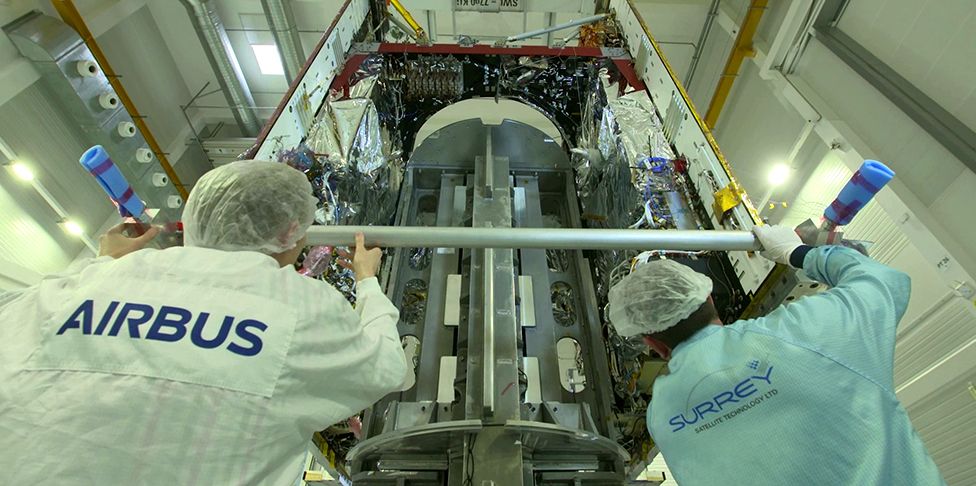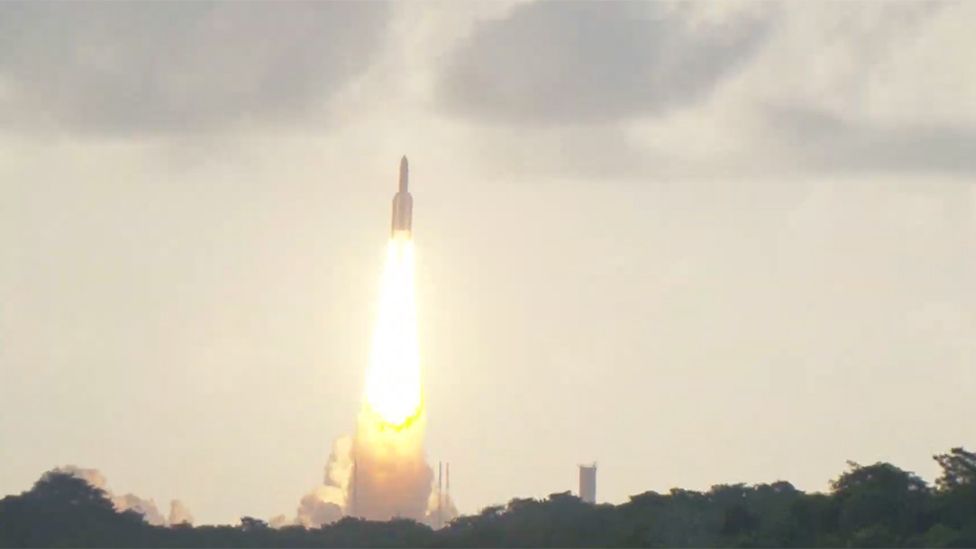A telecom satellite has actually gone into orbit that UK market hopes will assist preserve its worldwide management in the sector.
A quarter of the world’s huge telecoms spacecraft are made in Britain, and the brand-new Quantum platform is billed as a next-generation item.
It’s totally software-defined, implying it can be reconfigured in space to satisfy altering market conditions.
Quantum was released on an Ariane-5 rocket from French Guiana.
It will be manoeuvred to a position 36,000 km above the equator, simply east of Somalia, from where it will serve mainly North African and Middle Eastern clients.
The production of Quantum has actually been led from the UK, it is the French, Paris-based operator Eutelsat that owns the spacecraft.
Telecom satellites are the giants of the sky. These multi-tonne monsters sit high above the equator, bouncing TELEVISION, telephone call, broadband and other information services around the world.
Typically, they’ve been set up in the factory prior to launch to do extremely particular jobs in particular markets.
This may indicate, for instance, sending just on particular radio frequencies with shaped antennas to take the essential ground “footprint”. Telecoms markets do not stand still, and being able to completely reconfigure an in-orbit platform would permit an operator to adjust to any shifts in the organization landscape – without the requirement to introduce another bespoke and develop platform.
The operator would merely reprogram the existing satellite. Those antennas might digitally “alter their shape”, to customize the frequency, bandwidth and power requirements of the brand-new area to be served.
And this can consist of really adjustable scenarios, such as the progressing interactions requirements of aeroplanes throughout the day as they take a trip in groups throughout an oceanic passage.
Electronic antennas are likewise more resistant to jamming, making it harder for authoritarian routines to obstruct the signals, consisting of TELEVISION broadcasts, they do not like.
Quantum has the innovation to do all this. It’s been produced through the European Space Agency’s (Esa) Artes program, an R&D effort targeted at keeping the European satellite telecom market internationally competitive.

The significant partners on Quantum, in addition to Esa and the operator Eutelsat, are the UK Space Agency (UKSA) and the British-based producers Airbus UK and Surrey Satellite Technology Ltd (SSTL).
Airplane UK developed the telecoms side of Quantum; SSTL produced its bus, or chassis. The unique antennas were made at Airbus in Spain.
Plane has actually currently taken the lessons discovered into its “sales brochure” of brand-new items. The OneSat design it now offers to operators functions much of the exact same innovation as Quantum.
“Once you have the technology that allows you to have a fully flexible mission, it changes the way you manufacture satellites,” stated Dave Phillips from Airbus.
“If you’re not having to fully customise a bespoke satellite at the outset, you can move to a more mass-production model for satellite manufacturing, and that brings advantages in terms of lead time and cost,” he informed BBC News.
When it gets in service after a duration of screening, Eutelsat plans to make great usage of the flexibility of the 3.5-tonne Quantum spacecraft.
Communications on the move will be a main use-case, offering connections, not simply to aircrafts however to ships at sea and cars on land.
Another application will remain in the action to natural catastrophes.
This type of satellite, had it been functional previously this month, might have responded rapidly to supply emergency situation interactions to healing groups throughout the devastating floods in Germany.
Eutelsat is placing Quantum in an orbital slot at 48 degrees East, however the business understands the spacecraft could be moved anywhere around the world and still satisfy its objective.
“This capability to adjust to modifications, or to develop brand-new markets, will lead to a considerably more effective use of the satellite’s resources,” stated Frédéric Piro, Eutelsat’s Quantum program supervisor.
Elodie Viau is the UK-based director of Esa’s telecoms directorate. She stated the items that came out of her R&D department were a fine example of how costs in space benefited the broader economy.
“The Euroconsult monetary, financial and social health research study of 2019 forecasted this Eutelsat quantum job would have EUR20 of basic return for each euro invested,” she kept in mind.
Friday’s Ariane-5 rocket likewise lofted the Star One D2 satellite. This 6.1-tonne spacecraft is owned by Brazilian operator Embratel and will supply web connections to Central and South America.

